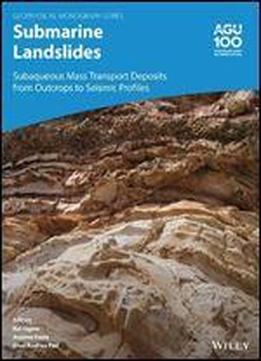
Submarine Landslides: Subaqueous Mass Transport Deposits From Outcrops To Seismic Profiles
by Kei Ogata /
2019 / English / PDF
31.4 MB Download
An exhaustive, comprehensive outline of both modern-day and ancient submarine slides and their geohazardous effects Giant submarine landslides are common in every subaqueous geodynamic context, from passive and active continental margins to oceanic and continental intraplate settings. They pose significant threats to offshore and coastal areas due to their frequency, dimensions, and terminal velocity, capacity to travel great distances, and ability to generate potentially destructive tsunamis. Submarine Landslides is a timely, up-to-date overview of large-scale, heterogeneous sedimentary mass transport processes and products, providing both original and review contributions on submarine landslide deposit cases from both field-based and geophysical studies. A resource of practical importance to contemporary natural hazard studies, this in-depth volume presents an intuitive, integrated examination of the mechanisms and characteristics of subaqueous mass transport deposits. Volume highlights include: Overview of large-scale, heterogeneous sedimentary mass transport and submarine landslide processes and products Geophysical data showing systematic occurrence of submarine landslide deposits at various scales Analyses of outcrop-based, geophysical case studies collected worldwide Broad discussion of practical implications of submarine landslide studies in geohazard studies Impacts of submarine landslides on the hydrosphere, atmosphere, cryosphere, lithosphere, and biosphere Enables cross-disciplinary and multi-scale observation and interpretation of common features of different case studies Links cause-effect relationships of mass transport processes











